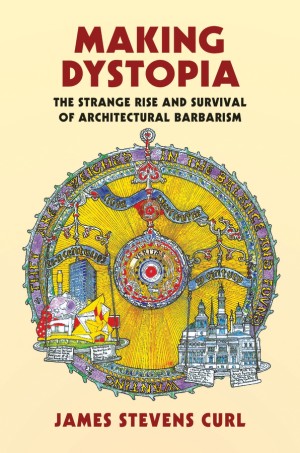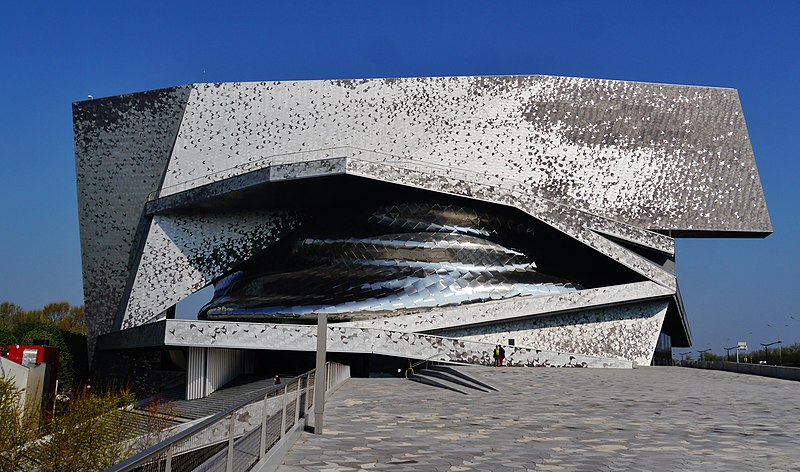Having read a few reviews of James Stevens Curl’s recent Making Dystopia: The Strange Rise and Survival of Architectural Barbarism, I’m likely to add it to my booklist (when I have a budget for new books again, that is). Here, Michael Mehaffy shares his comments on the book:

Cumbernauld Shopping Centre, voted as Britain’s most hated building in a Channel 4 poll.
Photo by Ed Webster via Wikimedia Commons.
For most reform-minded urbanists today, the complicity of architectural Modernism in the urban fiascoes of the last century is not in dispute. A representative (and seminal) criticism was Jane Jacobs’ withering 1961 attack, in The Death and Life of Great American Cities, in which she described Le Corbusier’s “wonderful mechanical toy” that “said everything in a flash, like a good advertisement” — but as to how a city actually works, it told “nothing but lies.” Jacobs’s work was of course a major inspiration in forming the Congress for the New Urbanism, along with the work of other reformists like Leon Krier, Christopher Alexander and Vincent Scully.
In fact, the 1996 Charter of the New Urbanism almost precisely inverts Le Corbusier’s 1933 Athens Charter: in place of the Modernists’ functional segregation, we would have mixed use; in place of their dominance of fast-moving vehicles (especially cars), we would have walkability and multi-modal streets; in place of wholesale demolition of historic districts and prohibition of historic styles, we would have preservation and renewal, and buildings that “grow from local climate, topography, history, and building practice.”
Yet in the last few decades, architectural Modernism has enjoyed a resurgence among some New Urbanists, as it has in the wider profession of architecture. For them, it’s reasonable to separate the urban mistakes of Modernism from its alleged architectural genius, which, as they see it, continues to offer inspiring building design ideas that can take their place happily within great new cities.
Of course, many critics would not agree — including many of the profession’s most prominent insiders. For them, the building-scale and urban-scale failures of Modernism have been of a piece, borne of a totalizing but defective theory of habitat, and even a dubious theory of architectural form itself. As the Post-Modernist Rem Koolhaas observed (in his 1995 book S,M,L,XL), “Modernism’s alchemistic promise, to transform quantity into quality through abstraction and repetition, has been a failure, a hoax: magic that didn’t work.” Nor was Koolhaas the first to attack the ideological foundations of Modernism. Similar criticisms came from earlier insiders like Sibyl Moholy-Nagy, wife of Bauhaus pioneer Lazslo, whose stinging 1968 essay on the Bauhaus labeled it “Hitler’s Revenge.” Its built works in the US carried, for her, “the browbeating symbolism of a negative ideology that was already bankrupt when the dying German Republic unloaded it on America.”
Yet for a movement that has been so frequently discredited, Modernism still has a curious grip on the profession even today. That’s because from the beginning, according to historian James Stevens Curl, the movement has been populated by “architectural bullies” who would stop at nothing to seize power, extinguish its competitors, re-write history, forbid all other styles (especially those with any ornament), and otherwise enforce a radical agenda — one that only seemed to offer all things alluring, progressive and historically inevitable. Beneath that marketable cover story, he says, the real agenda was an exhilarating quest for power and dominance, and especially later, for the wealth generated by a profitable industrialization of the human environment. Modernism sold, and no matter if it also sold out—cities, people, history, the future. For Curl, that approach was (and is) nothing less than “architectural barbarism.”





